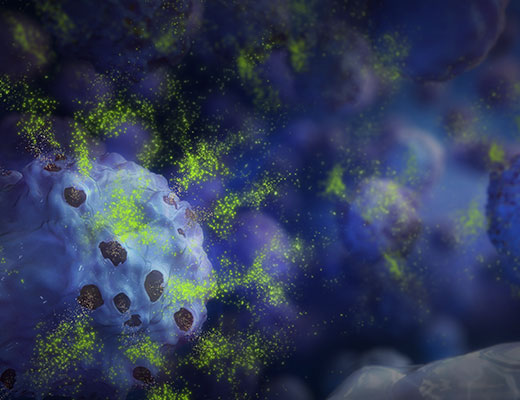Cell Health Assays
We offer a portfolio of easy-to-use assays that can be used together to provide a comprehensive assessment of cell health in multiple model systems and sample types, including monolayer cell cultures, 3D microtissues, organoids, primary cells, and stem cells.
These products include cell-based assays that measure basic indicators of cell health such as cell proliferation, cell viability and cytotoxicity, as well as assays that determine the specific mechanism of cell death, such as apoptosis or necrosis.
We also offer a range of biochemical and cell-based assays that are used to measure cellular processes such as inflammation, cytochrome p450 activity, oxidative stress, or autophagy.
Cell Health Assays Product Groups
ADME-Tox Assays
A selection of powerful tools for ADME-tox screens and research.
Apoptosis Assays
Kits and reagents for apoptosis detection, including multiplexing assays to detect cell health biomarkers.
Autophagy Detection
Simple, plate-based method for quantitative measurement of autophagic flux.
Cell Viability, Proliferation and Cytotoxicity Assays
Real-time and endpoint, add-mix-measure assays make it simple to determine cell health.
Inflammation Assays
Assays to measure the activity of caspase-1 and detect cytokine markers in simple add-mix-measure formats.
Oxidative Stress Assays
Assays for detecting reactive oxygen species and measuring the ratio of reduced to oxidized glutathione.
Top Cell Health Assays Products for Your Lab
CellTiter-Glo® 2.0 Cell Viability Assay
Updated CellTiter-Glo® Cell Viability Assay with improved reagent stability. Quantifies cell proliferation based on ATP detection.
G9241, G9242, G9243, MG1010
Caspase-Glo® 3/7 Assay System
An easy-to-use, plate-based luminescent assay for detecting caspase-3/7 activity.
G8090, G8091, G8093, G8092, MG1010
LDH-Glo™ Cytotoxicity Assay
Bioluminescence-based LDH assay for sensitive detection of cytotoxicity in samples low in cell number, including 3D microtissues.
J2380, J2381
An Introduction to Cell Health Assays
Cell health assays are used to detect and monitor various cellular events and build a picture of how and why cells live or die. They are used for many different applications including assessing toxicity of drug candidates and other compounds, analyzing cellular changes in cancer and other diseases, and studying basic cell biology.
Important factors to consider when choosing a cell health assay include the parameter you want to measure, the sensitivity needed, the model system you are using, the desired endpoint, number of samples, and the equipment or detection instrumentation required.
There are cell health assays that detect the number of living cells (viability assays), the number of dead cells (cytotoxicity assays) and for assessing the mechanism of cell death (apoptosis assays). Cell viability and cytotoxicity assays easily confirm the difference between no treatment and treatment of experimental wells. Additional assay endpoints such as caspase activation or phosphatidyl serine exposure, or multiplexing of multiple cell health endpoints, help elucidate more information on the impact of the treatment on the cells. In addition to proliferation or cytotoxicity, apoptosis, necrosis and cytostatic responses can all be evaluated using cell health assays.
Cells in culture are only a model system and are different than cells in their normal in vivo environment. 3D cell cultures more closely mimic in vivo conditions but can present challenges for experimental design. Assay reagents may have difficulty reaching the center of large 3D microtissues, and lytic assays may not be able to disrupt all cells within the 3D system. If using 3D cultures, products and assay protocols optimized for 3D systems will be a better choice.
Assay formats for cell health assays include endpoint and real time. Endpoint assays provide a snapshot in time of what is occurring at a cellular level and are suited to applications where treatment response time is understood. Real-time assays provide repeated measurements from the same sample over time, are helpful in understanding the time course of a response and conserve cells and samples.



